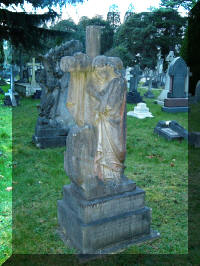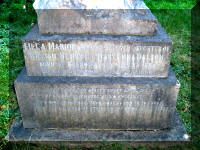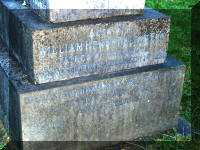by Howard J Dalton.
Bournemouth is situated on the south coast of England and is of comparatively recent origin dating from 1810. It became renowned for natural chines and pine trees in the Victorian age and attracted those seeking better health. By the late 1880’s the residential suburb of Westbourne between Bournemouth and Poole had developed, and around 1896 there came to live William Henry Dalton, his wife Mary Emma nee Cook, and their family.
His background was unusual. He succeeded to the Manor of Thurnham, Lancashire, after the deaths of eleven relatives including his second cousin, Sir Gerald Dalton Fitzgerald. William was poor and the estate at Thurnham had been allowed fall into disrepair. He had no direct link with his ancestral home as he had spent much time in America, Brazil and Argentina. William had taken an American wife, daughter of a slave owner, and at least three of his family of two sons and six daughters were born in Argentina and spoke Spanish fluently.
My natural interest in Bournemouth as my own birthplace made me seek more information about the family and I visited the excellent Local Studies Section at the modern Bournemouth Library.
The first mention that I could discover was in the Burgess Electoral Roll for 1897-8. William Henry and his family lived at ‘The Ferns’, Alumhurst Road, close to the shopping parade in Westbourne.
The 1901 census has the following entry:
‘The Ferns’, Alumhurst Road, Westbourne.
| Mary E.Dalton | Head | Wife | aged 48 yrs. | Living on own means |
b.America (Brit.subj) |
| Laura M “ | Dghtr | S | “ 23 “ | ------ |
b.Argentina “ |
| Lola M “ | “ | S | “ 18 “ | ------ |
b “ “ |
| Alzira “ | “ | S | “ 11 “ | ------ |
b “ “ |
| Evaline “ | “ | S | “ 8 “ | ------ |
b “on the high seas” |
Another daughter, Lilla Marion, born in Buenos Ayres, on 25th. July 1880, had died aged 16 years at Bournemouth on 28th. December 1896, and her death was registered at Christchurch Registry Office. She was buried in Wimborne Road Cemetery, Bournemouth, by John Patterson, Clerk, Curate of St. Ambrose, Bournemouth.
The last entry I could discover for the family was at the same address in the Visitors Directory newspaper for 2nd April 1902. The property then passed in the ownership of Mr. E. H. Mooring Aldridge, well known Bournemouth solicitor. Mary Emma Dalton died at Thurnham Hall on June 6th 1945 and was buried at Lancaster Cemetery.
The departure of the family from Bournemouth was probably brought about by the death of William Henry in 1902 at Thurnham. His body was brought to Bournemouth for burial and he lies beside his daughter, Lilla, in Wimborne Road Cemetery. The internment took place on 16th May 1902 and was performed by Charles Edward Gollen, Clerk. (The headstone, depicting an angel supporting a cross still stands today).
The eldest son, John Henry, succeeded to the estate implementing some refurbishment of the property, and was followed after his death in 1937 by his brother, William Augustus, who died in 1965. The estate then passed to the eldest surviving sister, Eda Florence, until her death in 1971. The surviving sister, Alzira Eloise Dalton, continued to live at Thurnham Hall before moving into a cottage on the estate where she died in 1983. The ancient link with the Dalton family came to an end with the purchase of the Hall by Mr.and Mrs. Stanley Crabtree who carried out extensive refurbishment to the property.
My own Dalton family moved to Bournemouth from London, with links in North Buckinghamshire, around 1919 when my grandfather, Albert Edward, became Secretary of the Bournemouth Flying School. After some years he became partner in the firm of E. W. Marshall Harvey and Dalton, Solicitors.
I had little idea when visiting Thurnham with the Dalton Genealogical Society in 2004 that the family had for a time resided just a few yards from my present home close to Westbourne and a short distance from the home (bombed in the Second World War) where between the years 1884-1887 Robert Louis Stevenson wrote “Dr Jekyll and Mr Hyde” and “Kidnapped”!
 |
The Headstone of William Henry and Lilla Dalton
|
 |
Inscriptions from the Headstone |
 |
Inscription from the Headstone above |